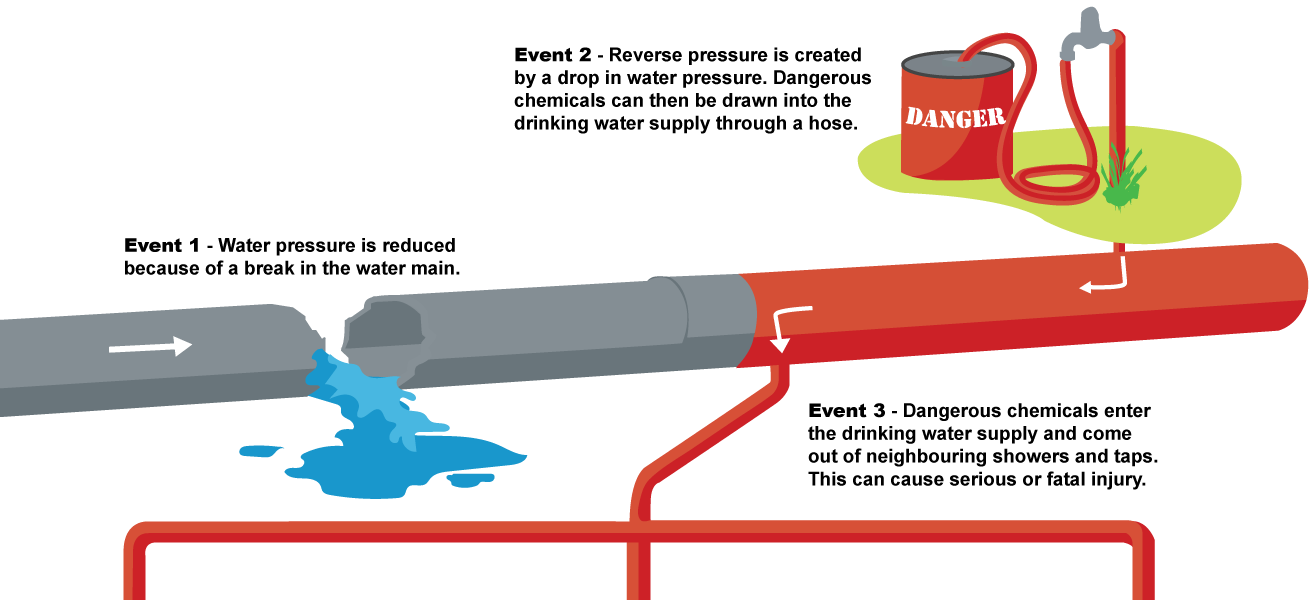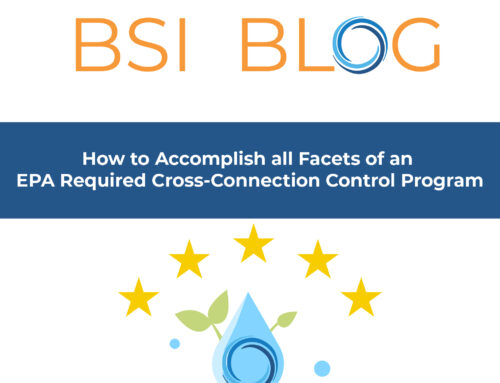What Causes Backflow Incidents to Occur?
Have you ever wondered what exactly are the main causes of backflow incidents? Backflow incidents are caused by one of two things: backpressure or backsiphonage. Backpressure is created when the pressure within the customer’s system outweighs the water supply pressure. Elevated tanks, heating systems and booster pumps are great examples of the main causes of back pressure. Backsiphonage is created when there is a negative or reduced pressure in the water supply main. Hydrant flushing or water main breaks are two of the main causes of backsiphonage.

Now you may be curious, are all backflow incidents the same? The answer is, no! Backflow incidents are usually classified depending on the non-potable source.
1. High hazard
2. Low hazard
Nationally, there is no standard for defining what characterizes a high versus low hazard incident, however, each state will compose criteria which defines the cross-connection’s hazard level.
High hazard incidents are toxic, referring to a health or contamination hazard where a backflow incident poses a serious threat to the public water supply. Low hazard incidents are incidents that are non-health hazards and instead considered aesthetically objectionable, or a pollution hazard without serious effects to the public. Sometimes, classifications used by some water authorities are very low, moderate, and lethal.
Backflow Prevention Methods
Backflow prevention methods can be implemented at one of two points: at the service meter, called containment protection, or the point of water use at the fixture, called isolation protection.
These backflow prevention methods can be divided into four basic categories→
- Elimination
- Backflow Devices
- Backflow Assemblies
- Air Gap
Air Gap
Air Gap is the vertical, unobstructed space between the free-flowing end of the potable water supply pipe and the flood level, or overflow rim in a non-pressure receiving fixture, device or container to which the public water is supplied. The air gap should ideally be two times the diameter of the water inlet piping with a minimum of one inch. In some places, the air gap does not exceed twelve inches.
Downfall: The city water supply pressure is lost. The water customer must either use gravity or a booster pump to regain system pressure to move water from the holding tank to its intended point of use.
Elimination
Eliminating the cross-connection is necessary when the hazard has been improperly installed and plumbed, or when the hazard is simply no longer in use.
Backflow Device
Mechanical units are used for backflow prevention. They do not have inlet or outlet shutoff valves and usually do not have test cocks. For devices without test cocks, inline testing is not possible.
Important to note: Devices do not hold USC approval.
Backflow Assemblies
These are different from devices because they come equipped with inlet and outlet shutoffs, as well as test cocks for testing purposes. Depending on the jurisdiction, different assemblies will protect different levels of hazard.
Do Your Part!
- Water Customers – Have a cross-connection at your property? Comply with local permitting and building codes and install a backflow assembly, if required.
- If you have an assembly, ensure it is tested per manufacturer standards and/or water purveyor requirements.
- Testers – Ensure tests are submitted to the proper water/utility jurisdiction in a timely manner.
- Water Purveyor – Contact BSI Online to assist in tracking the annual test data for you.
What information did you find most helpful in aiding to prevent backflow incidents? This knowledge, as well as utilizing the BSI Online data management program can successfully increase backflow testing compliance, all while saving you time, energy and money. Visit our dedicated Automated Backflow Program Management page here for more information, and if you’re not already, make sure to subscribe to this blog page now to never miss a Backflow Solutions post!











